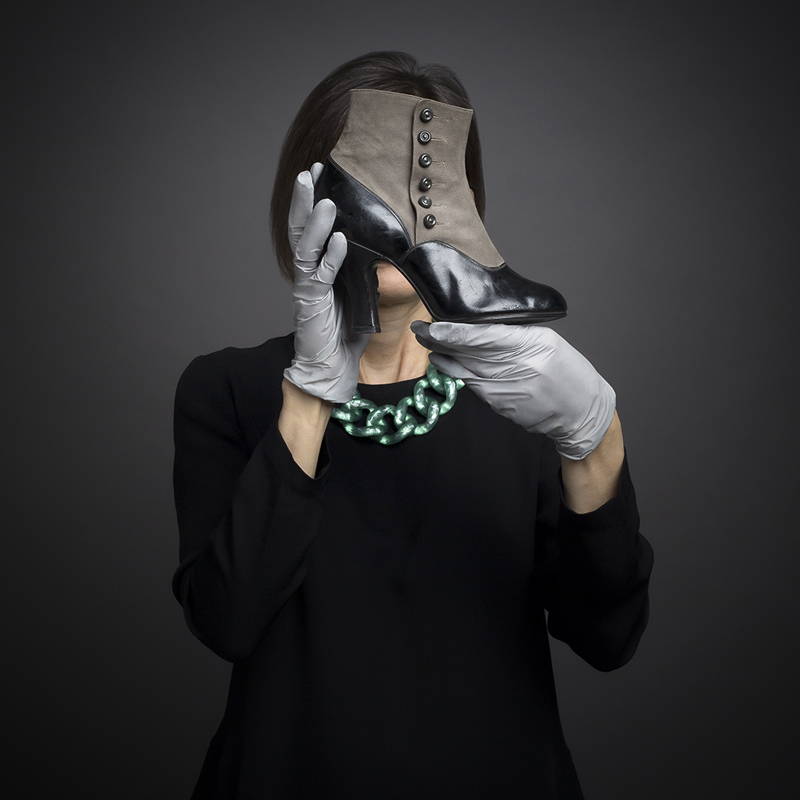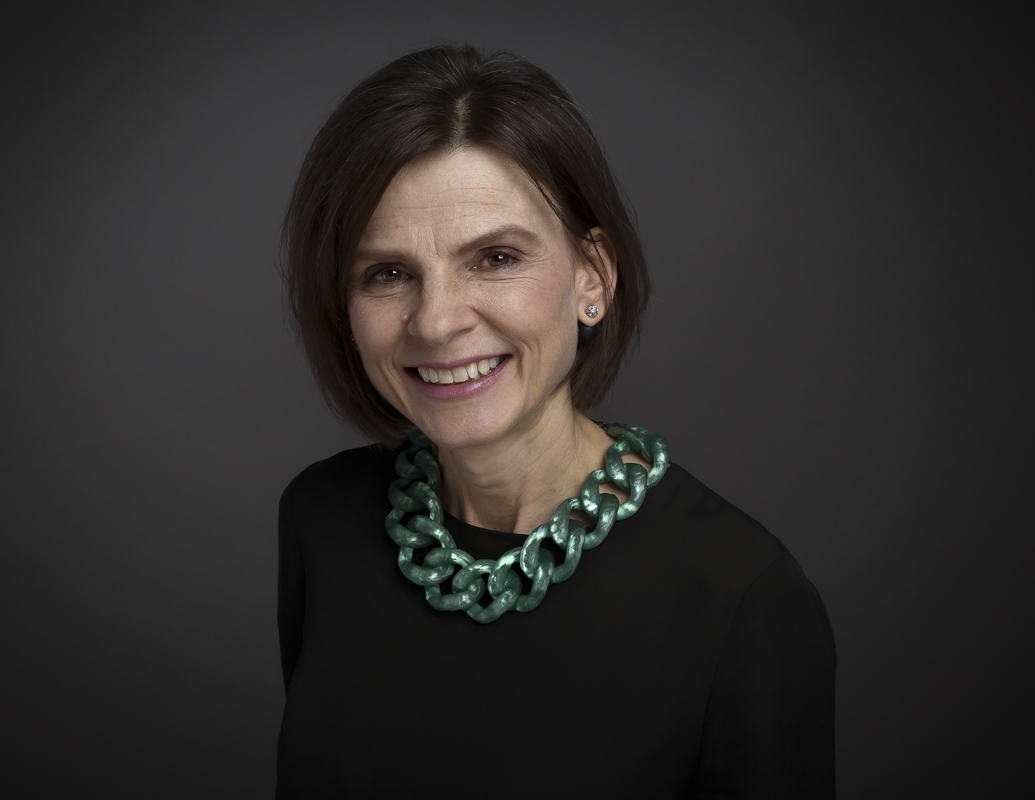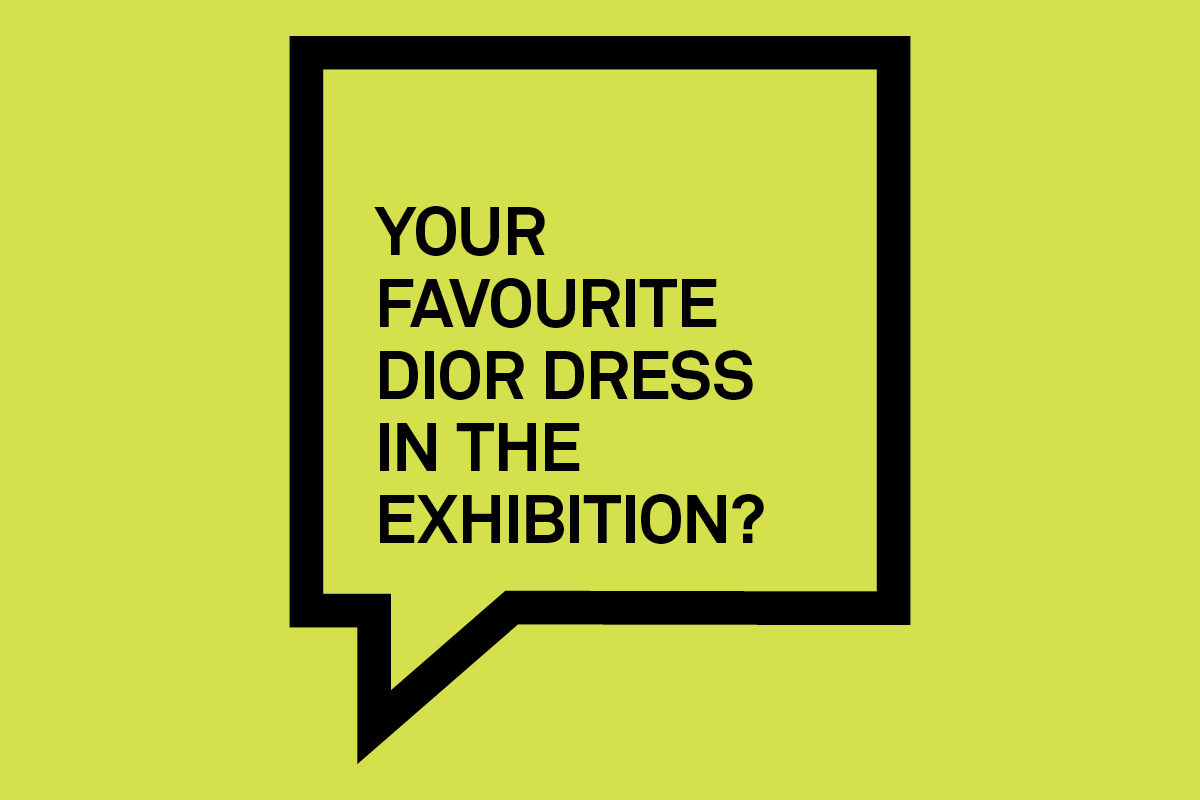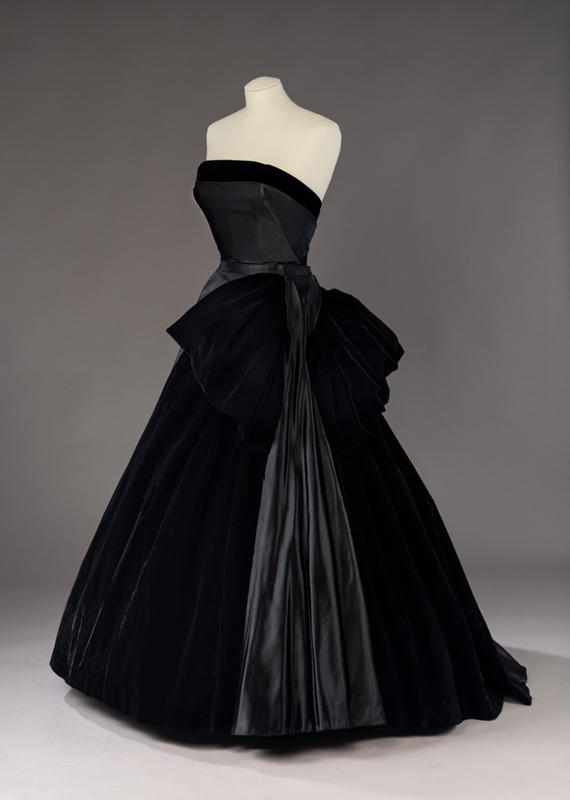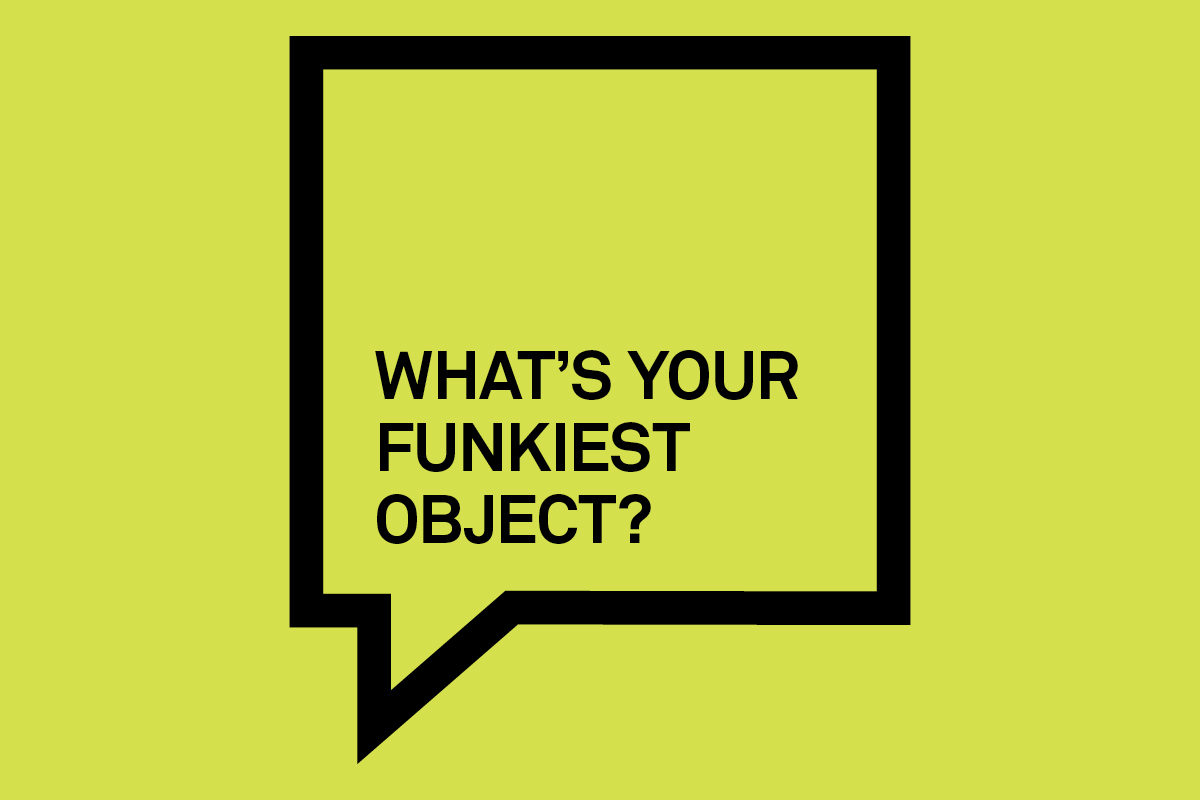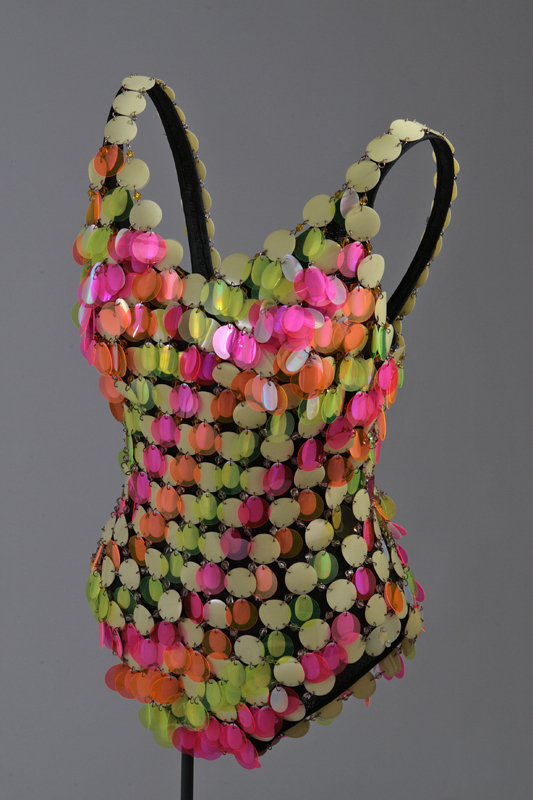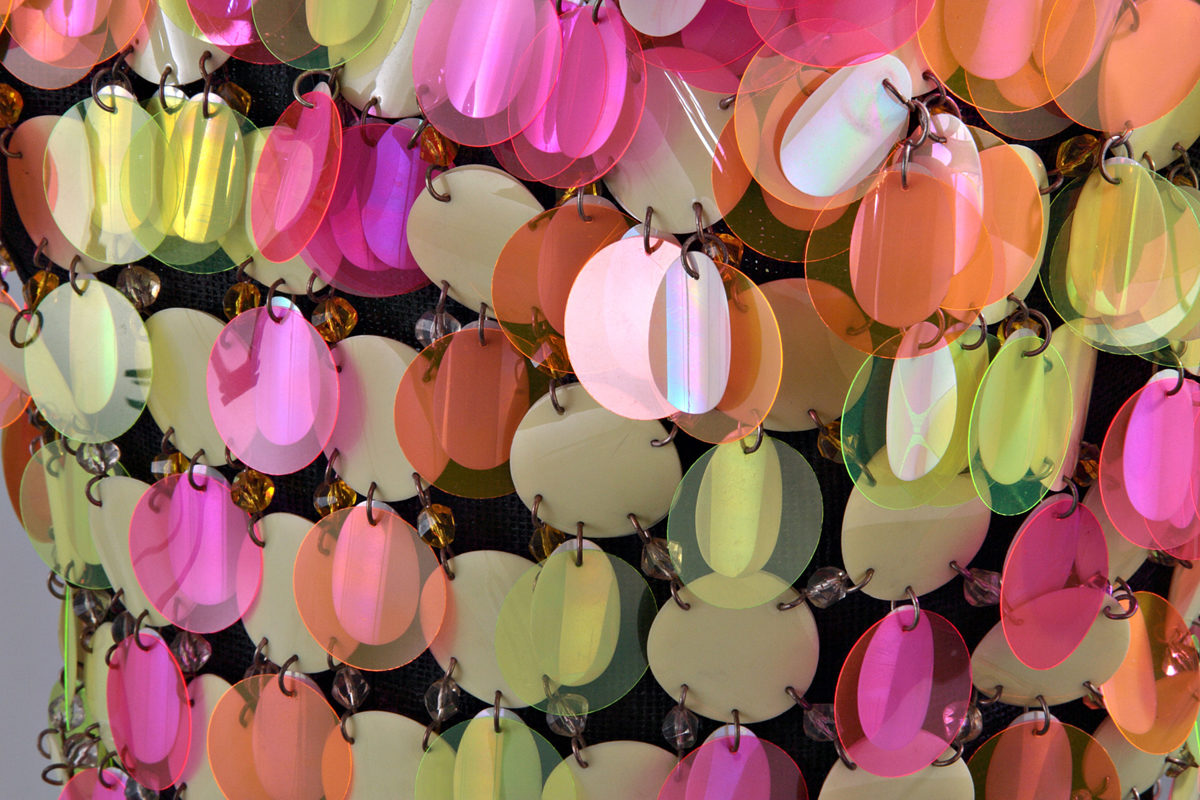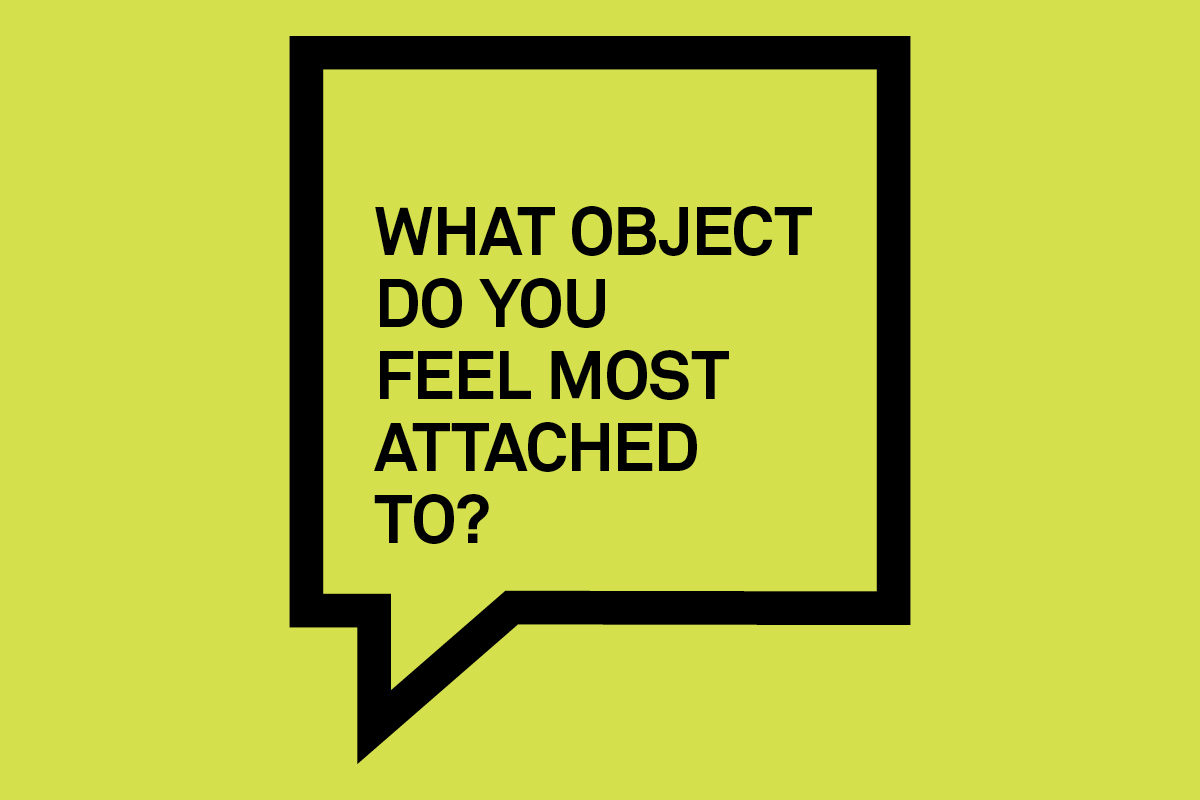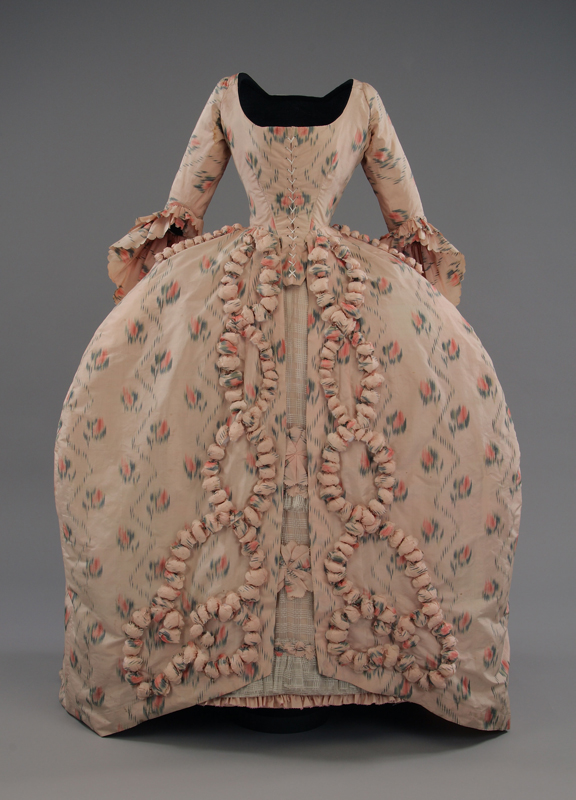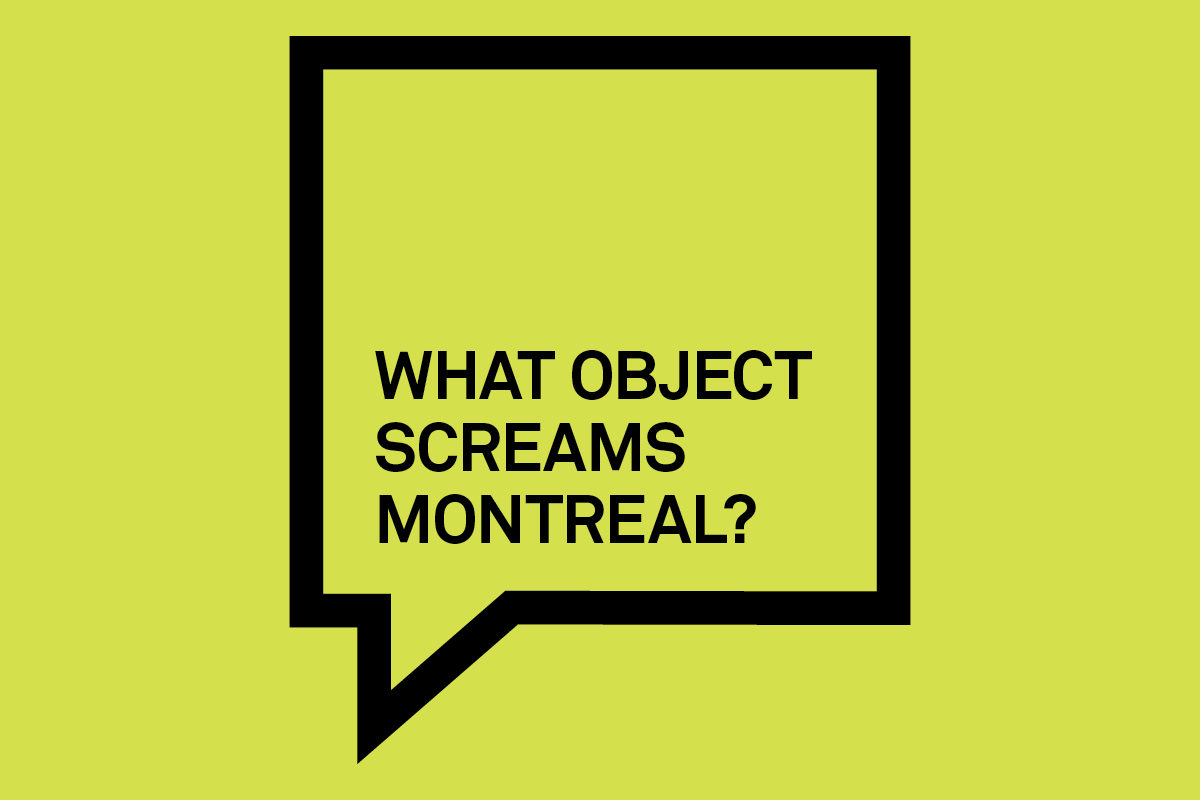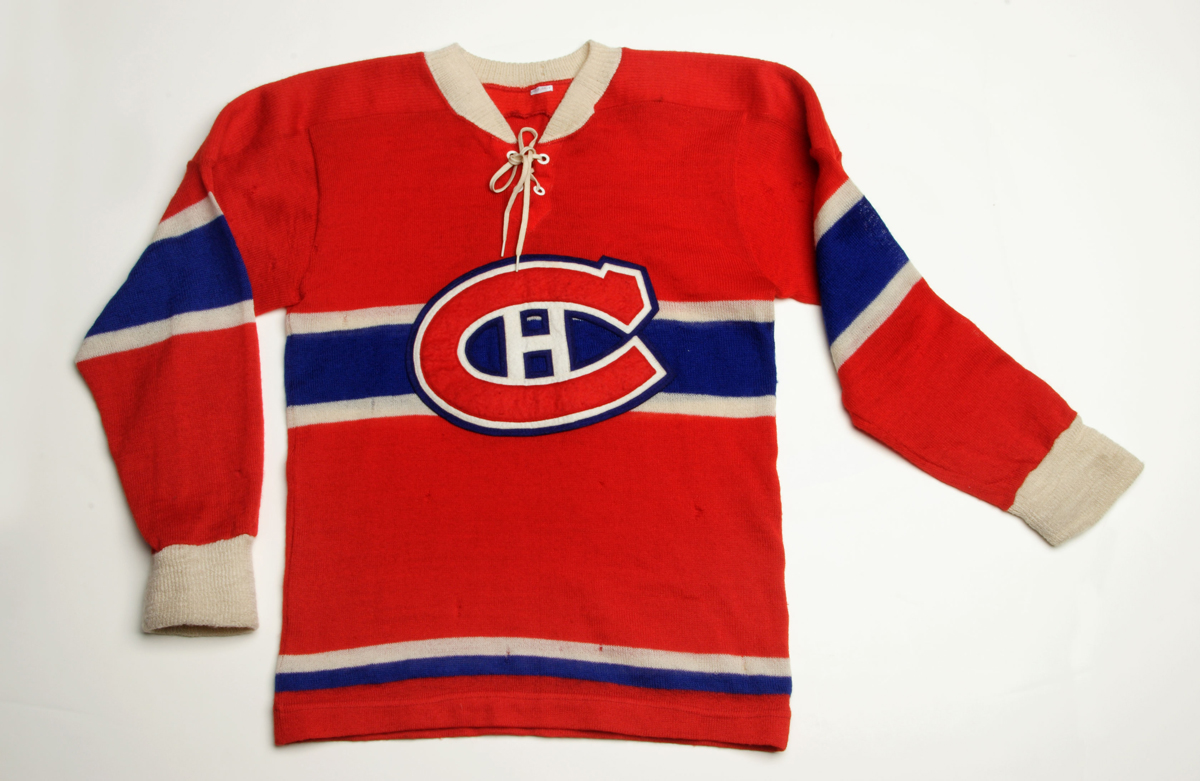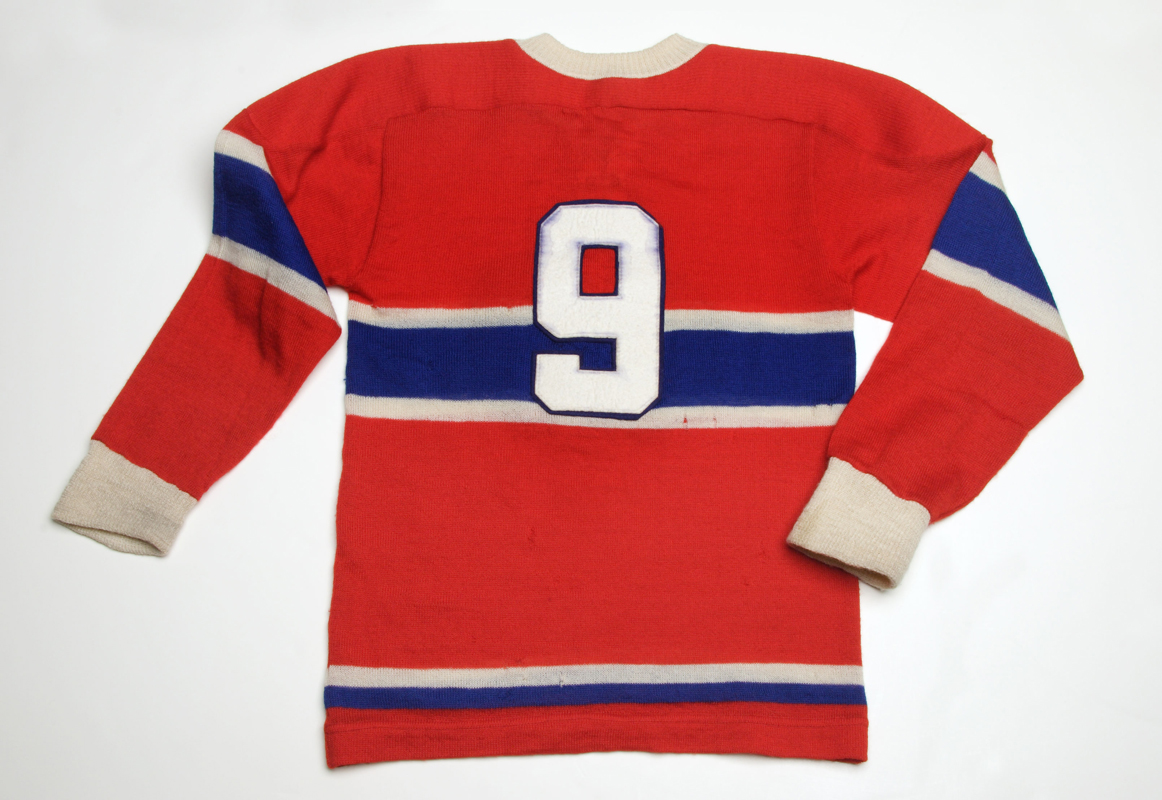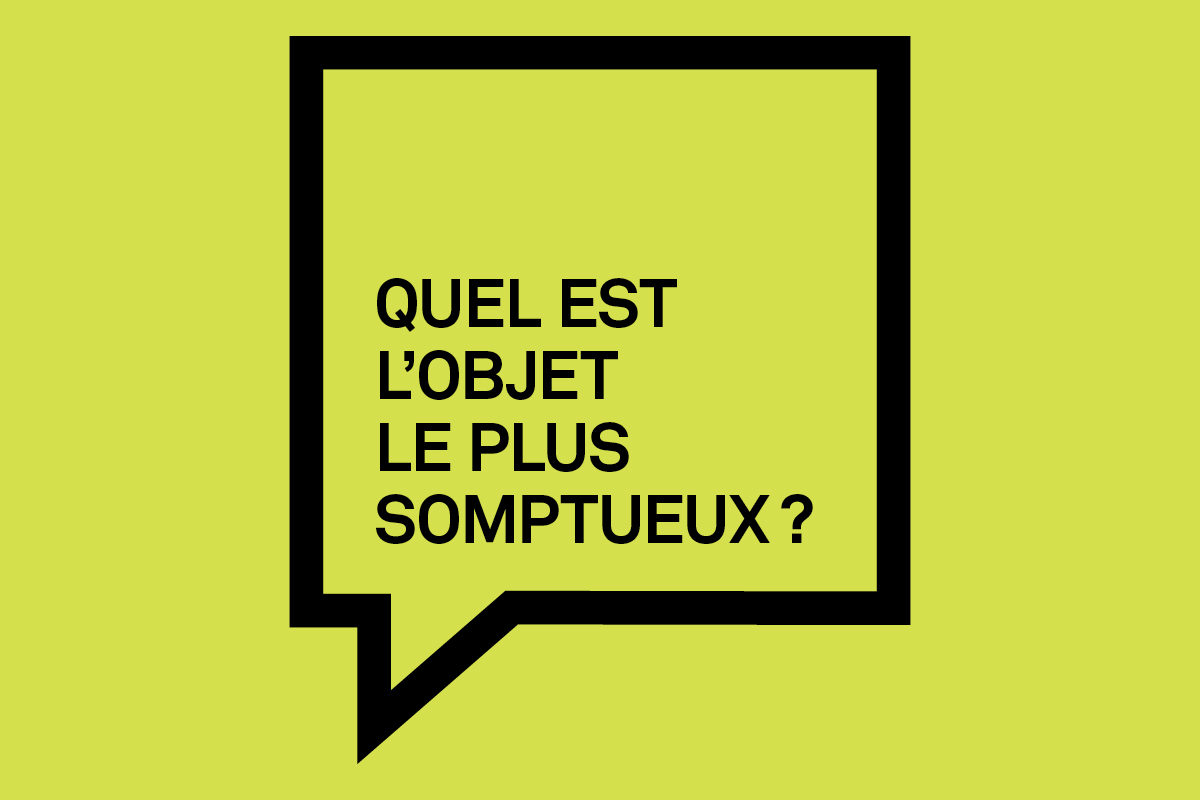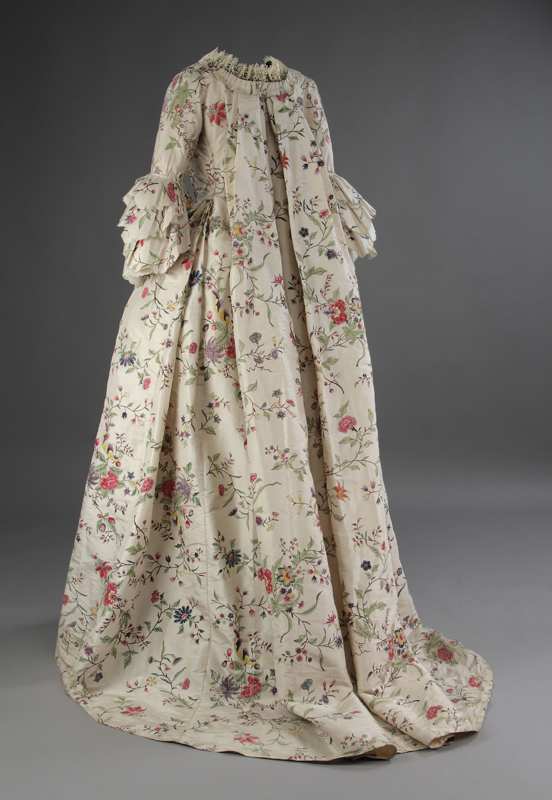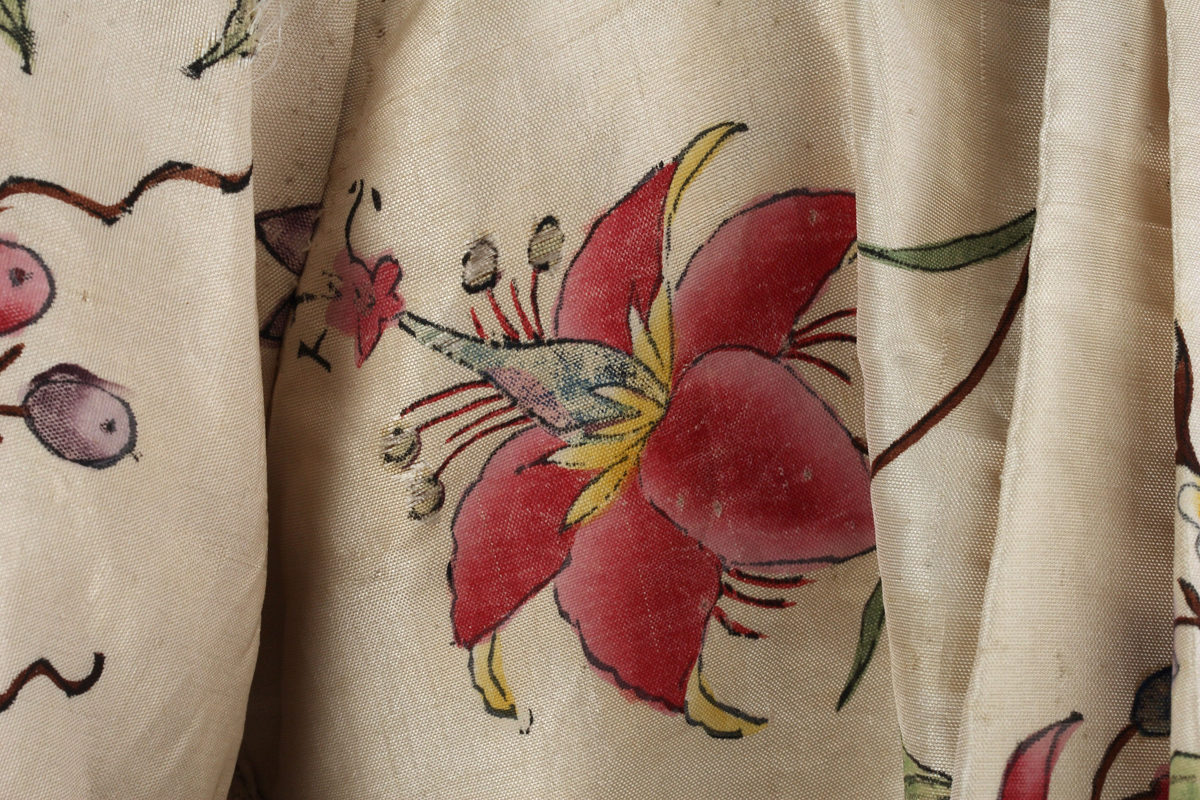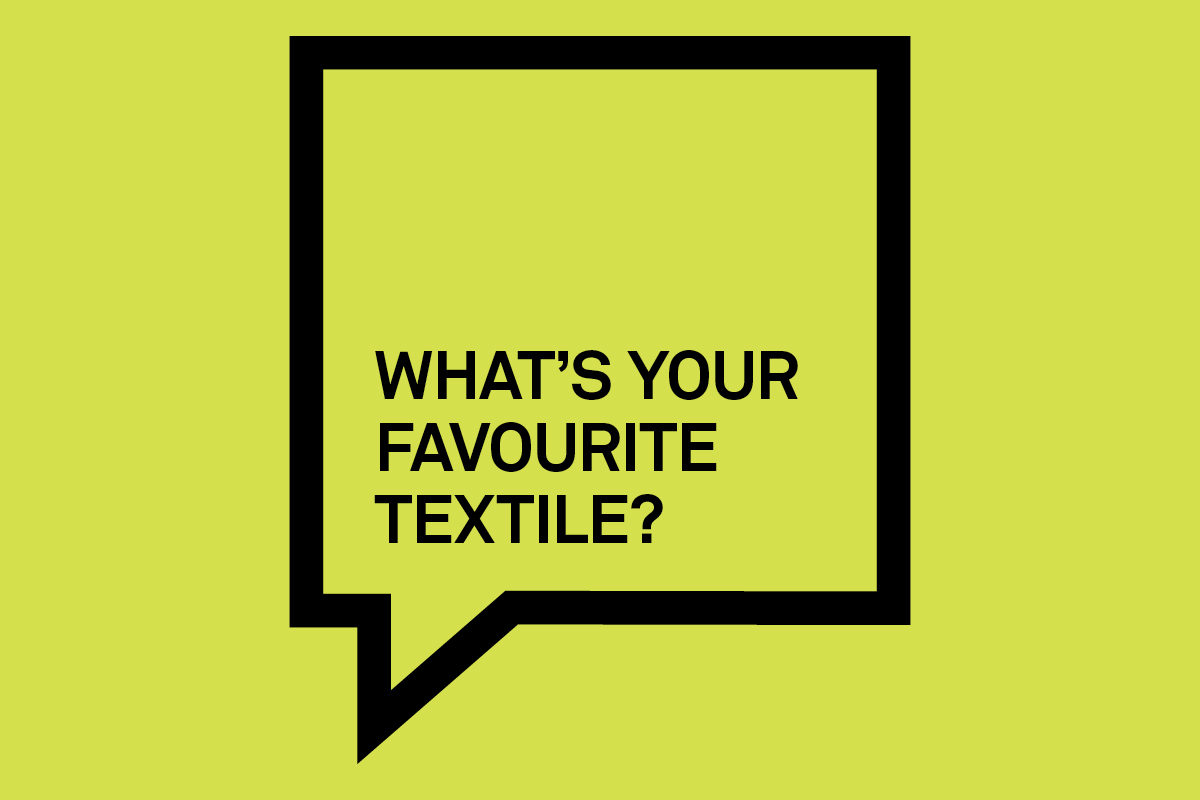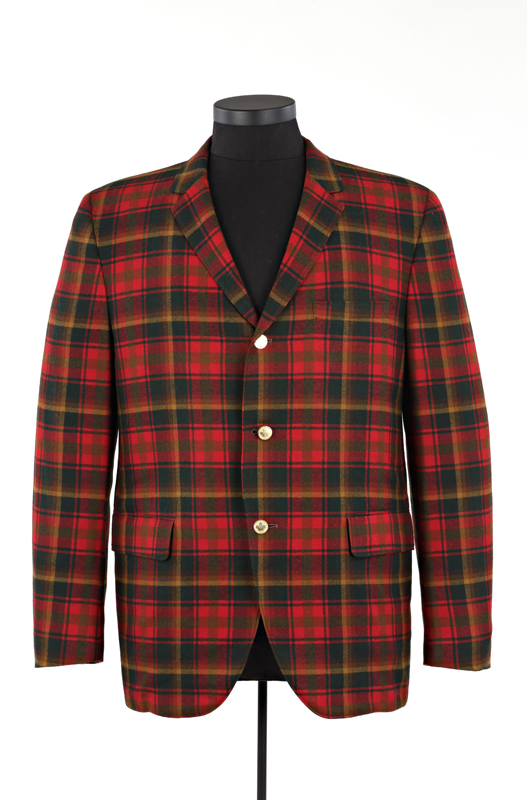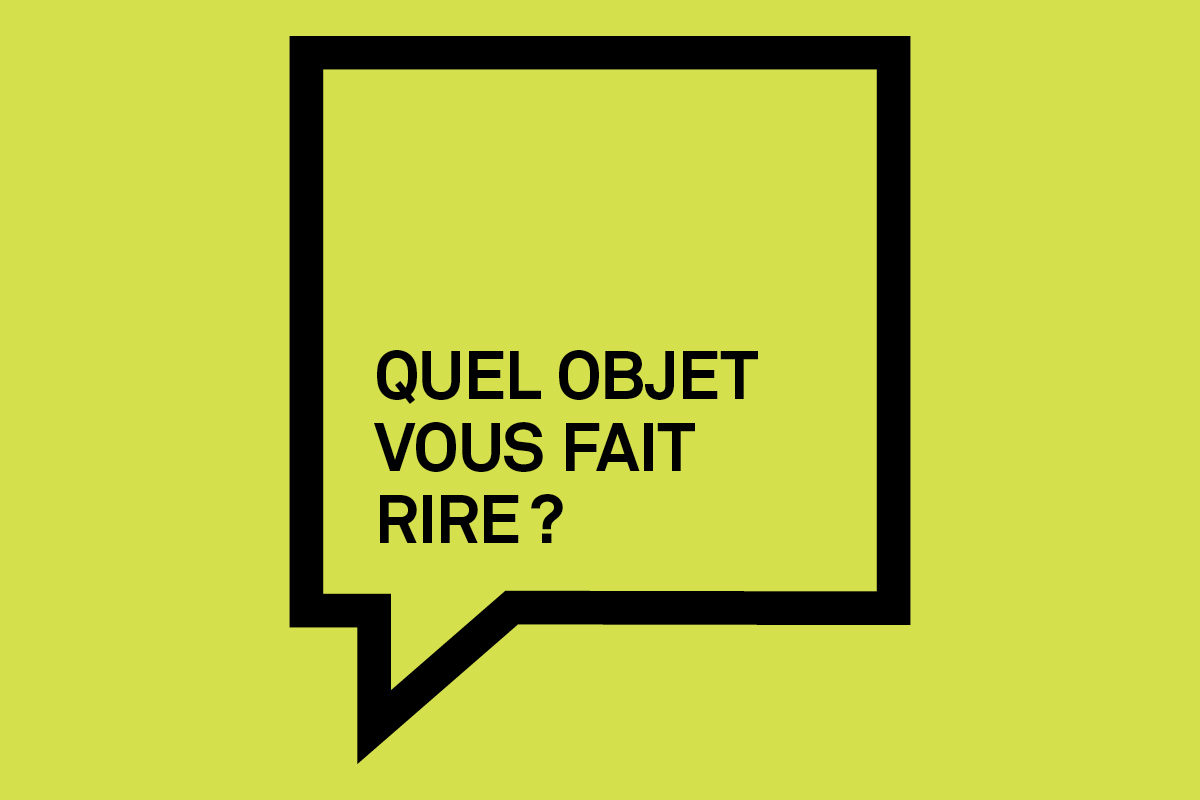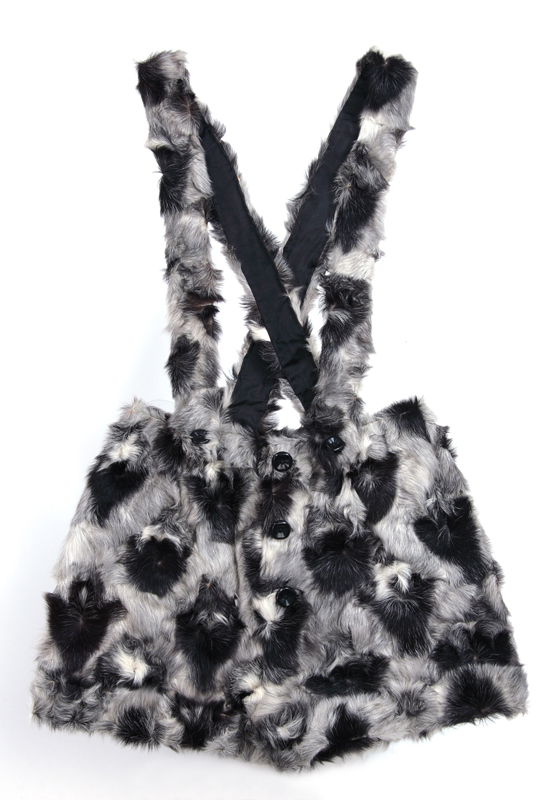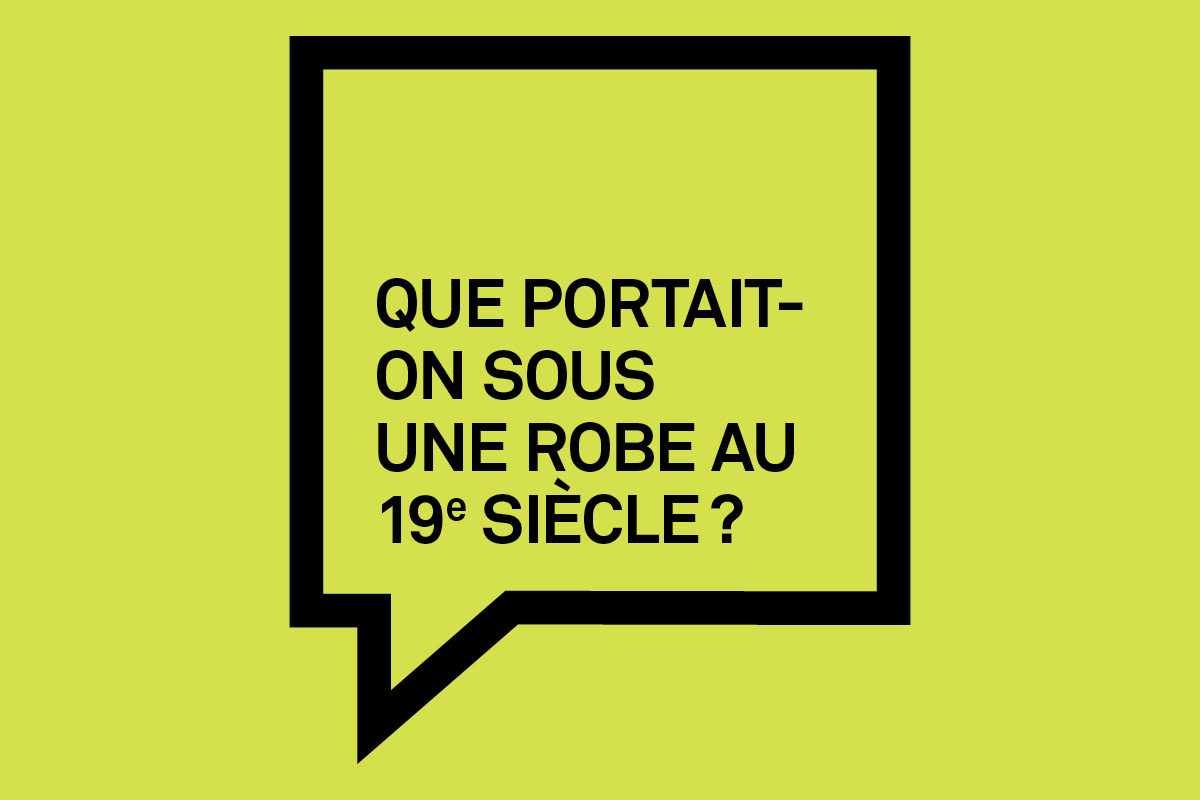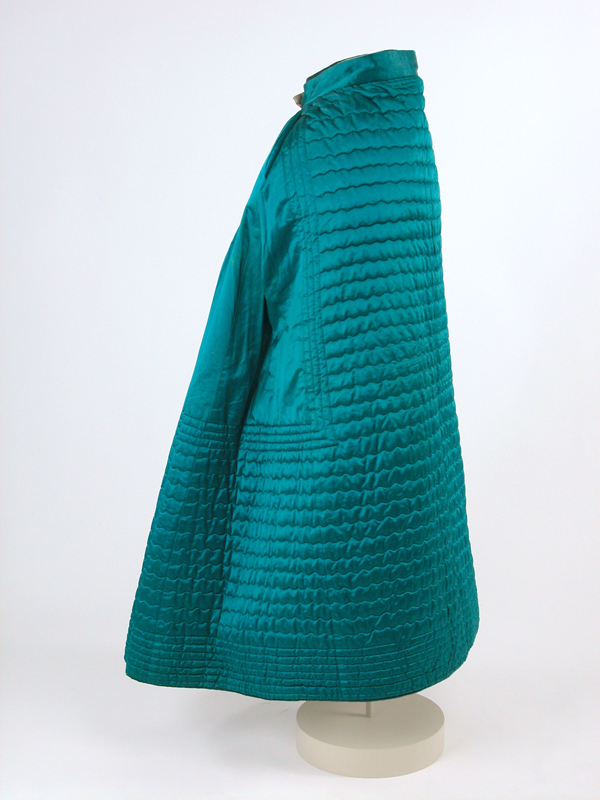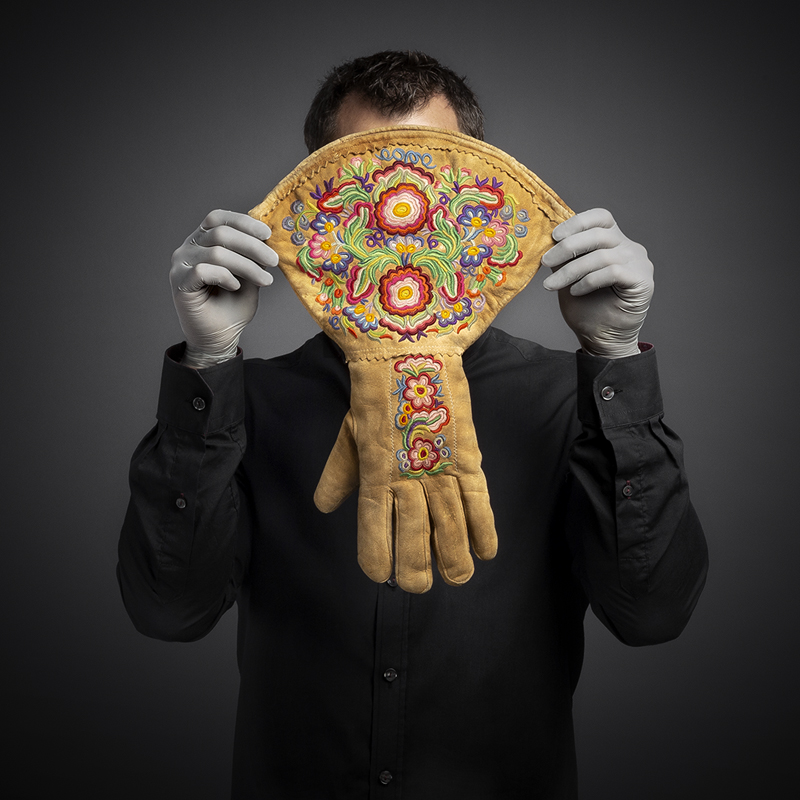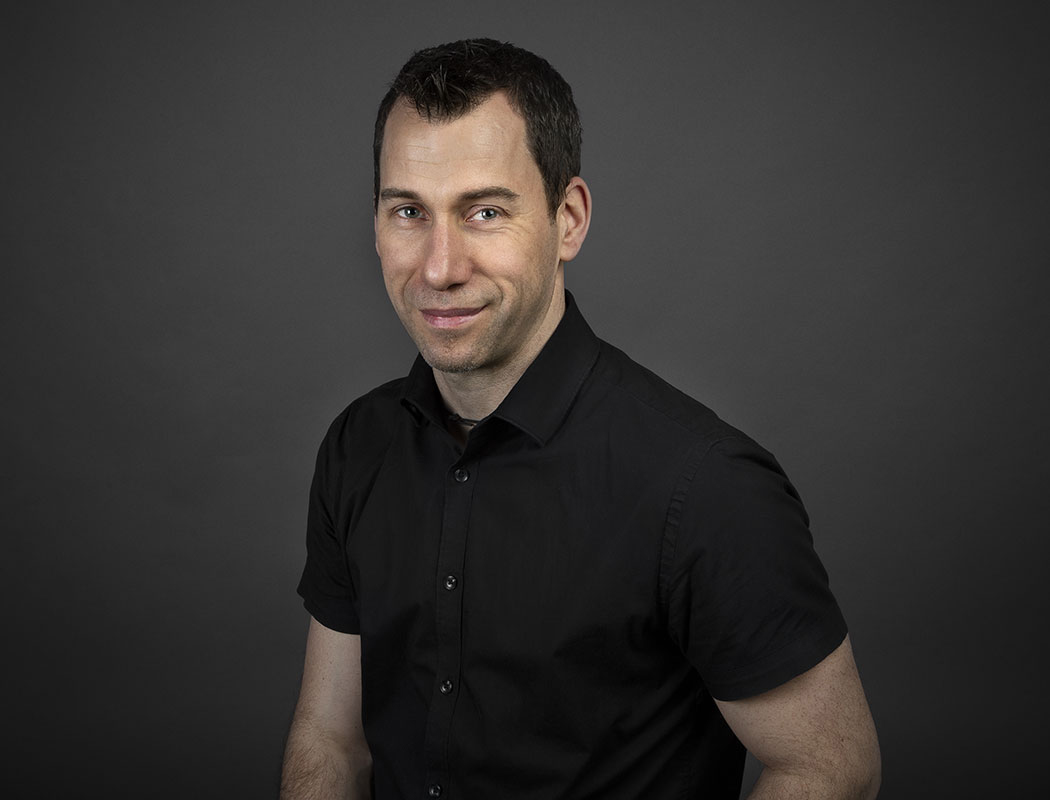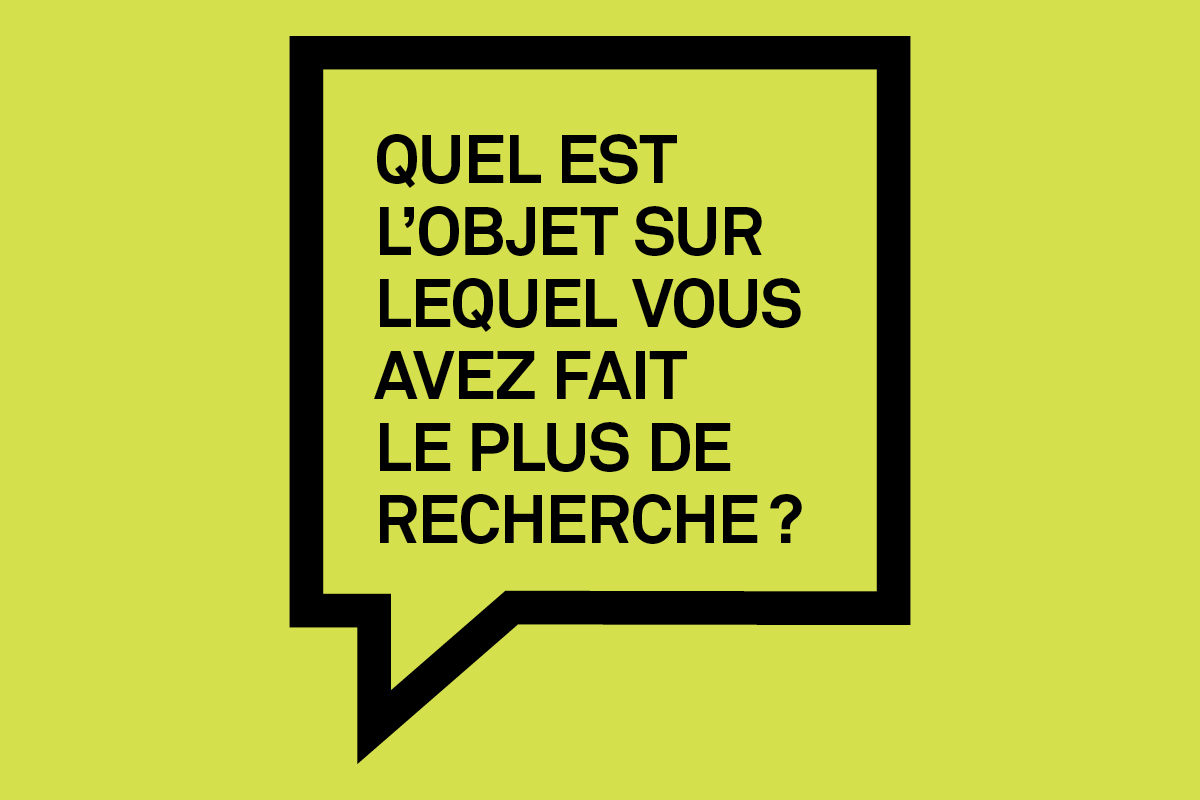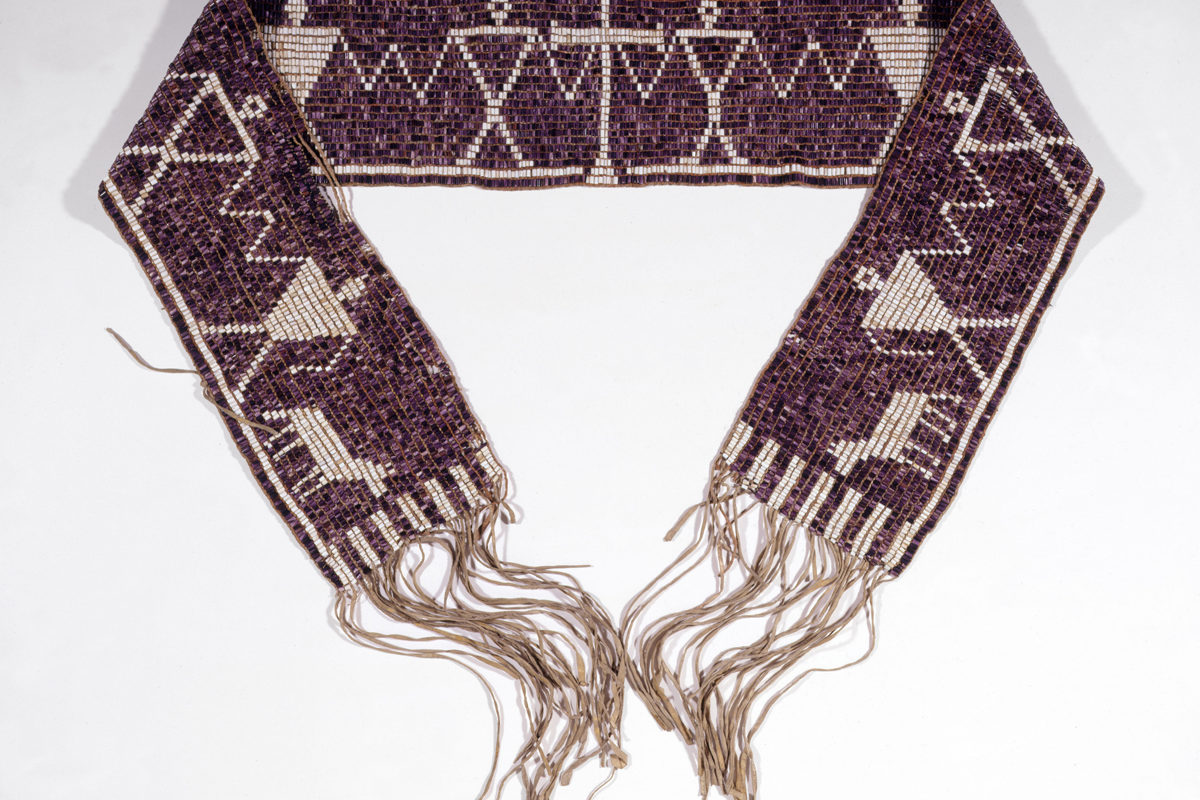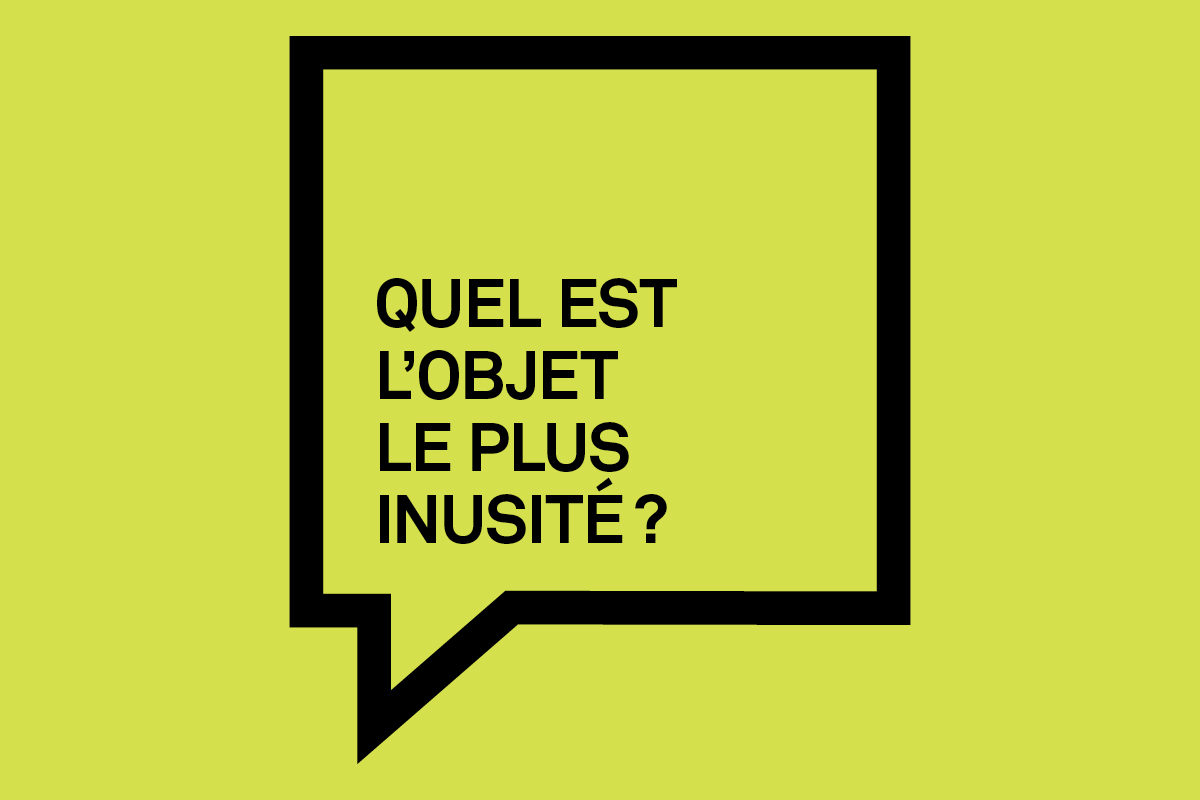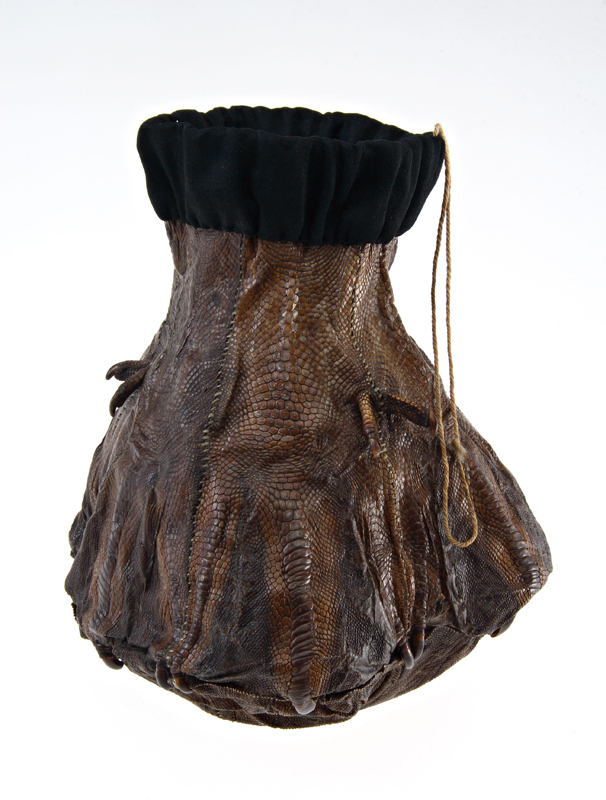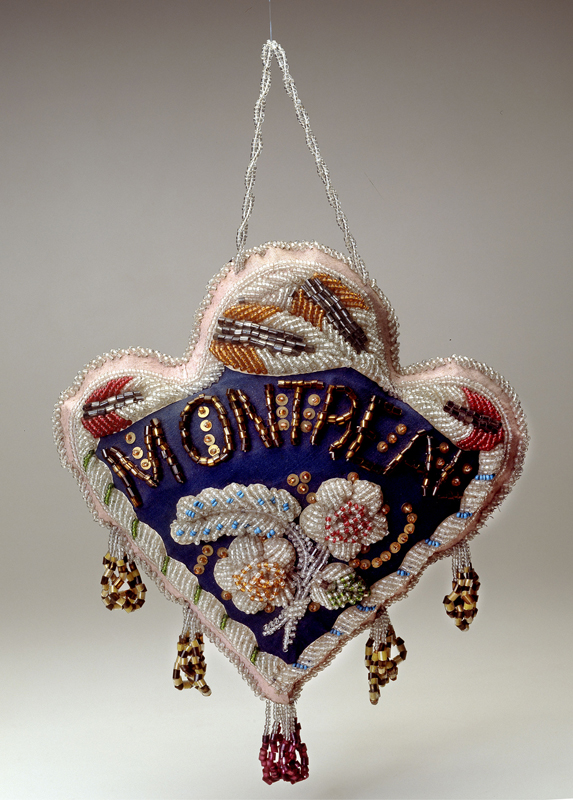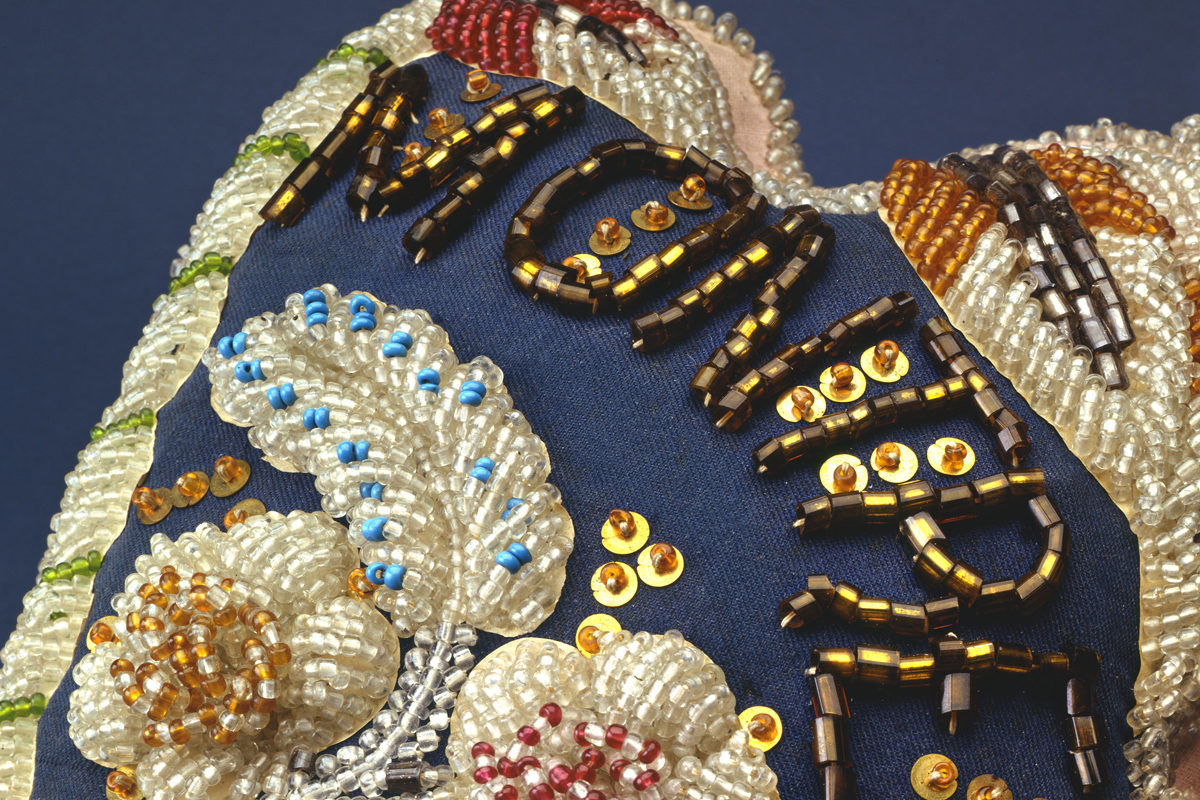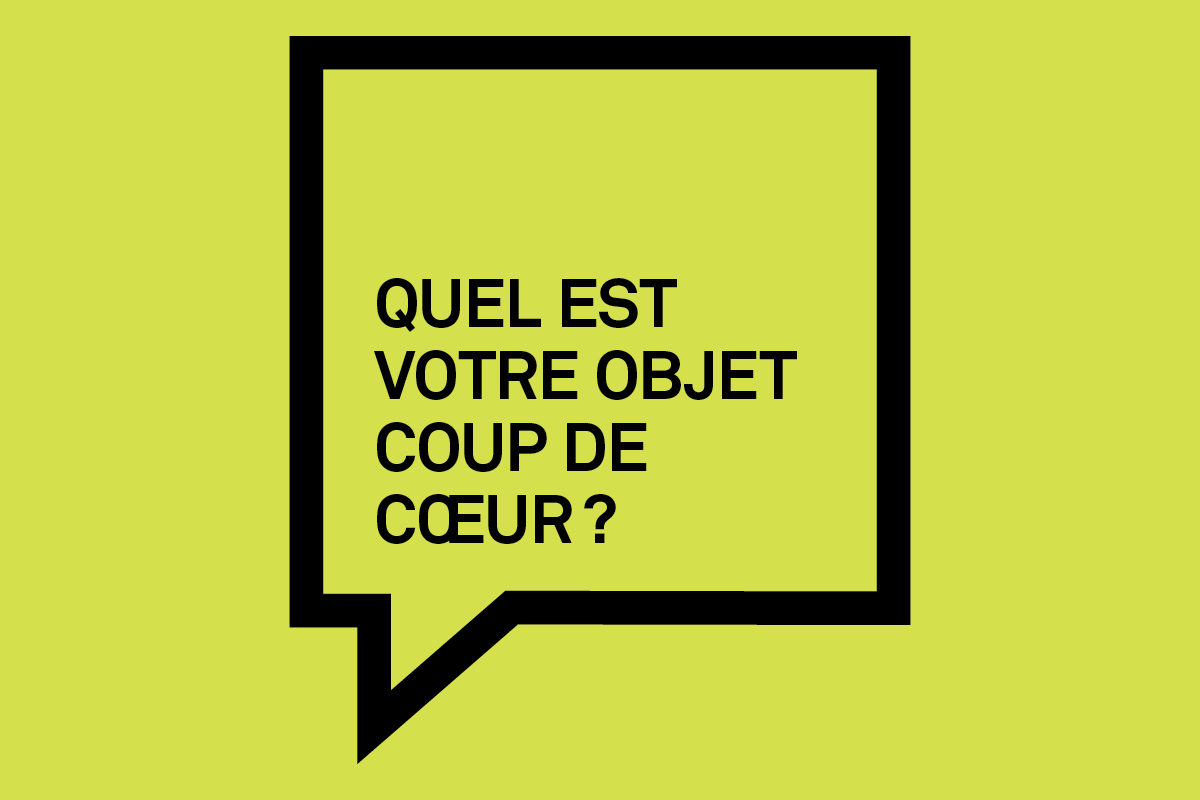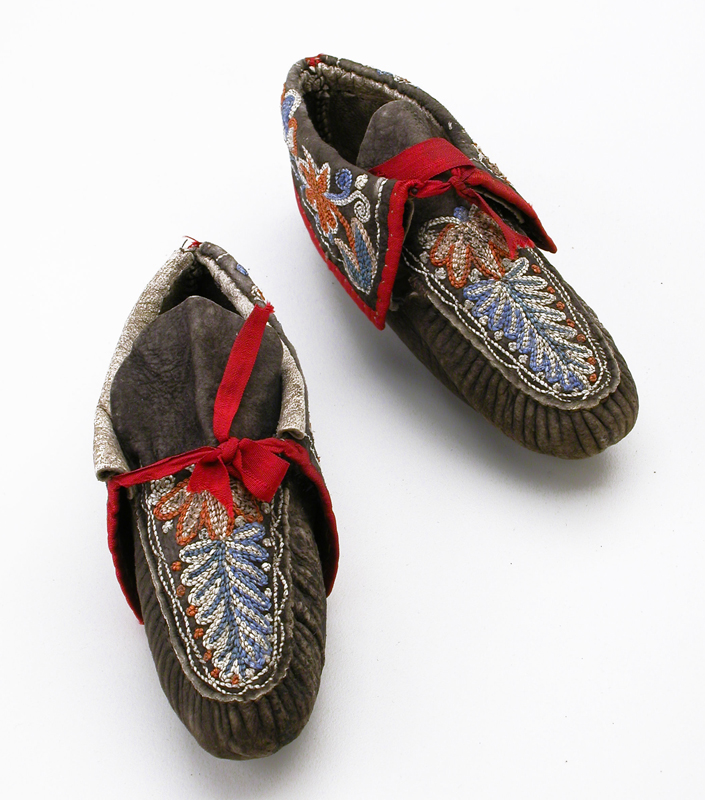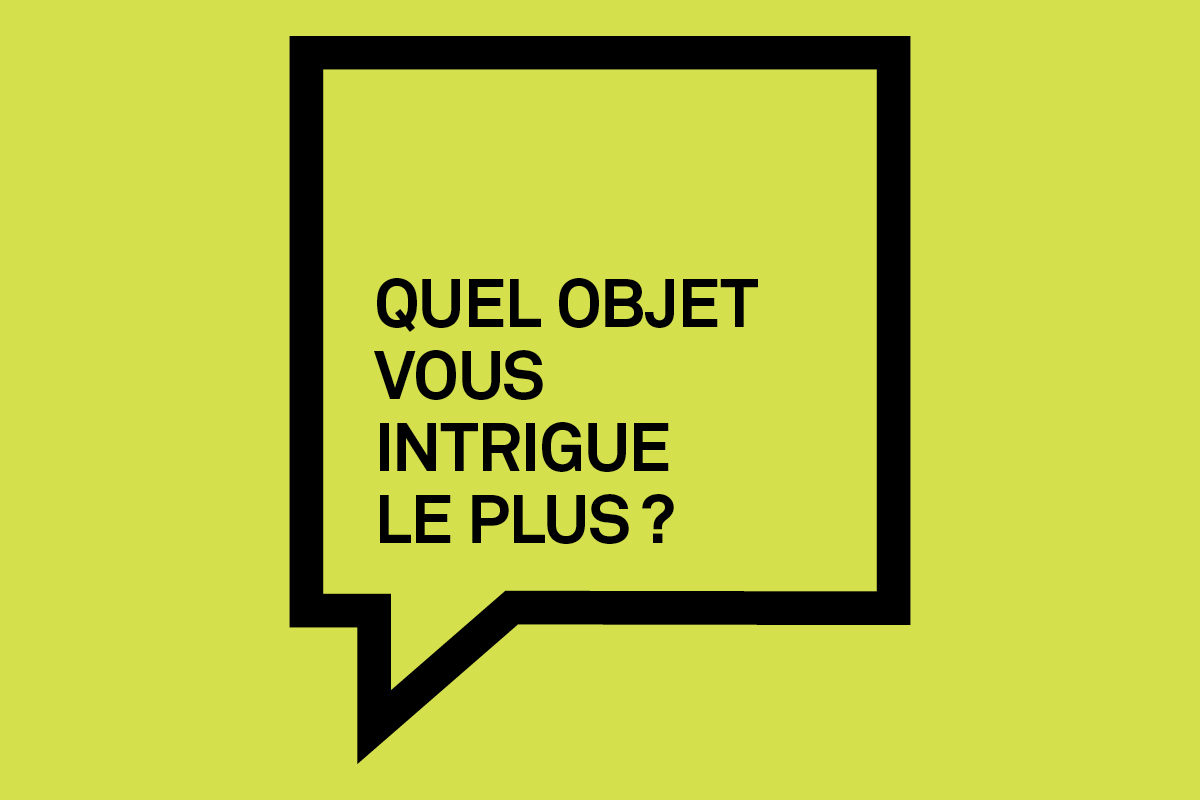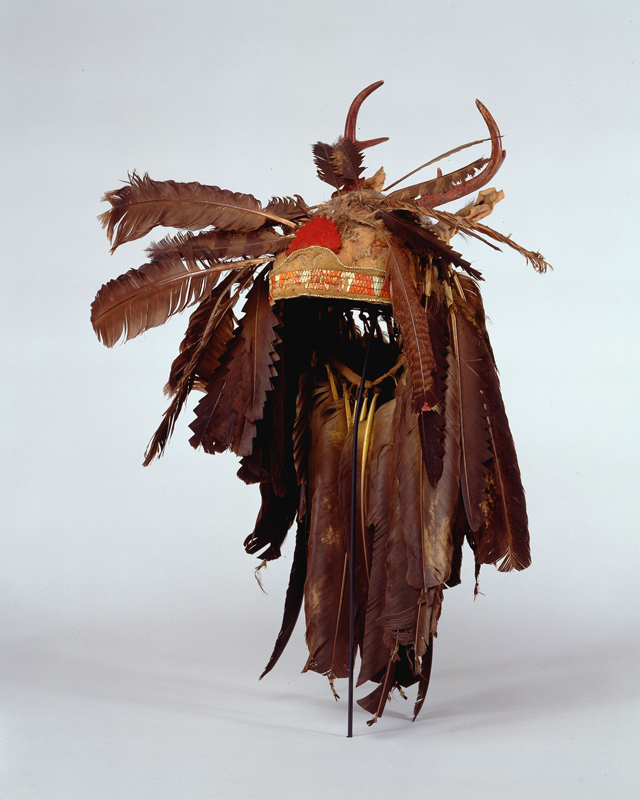Collections and Research
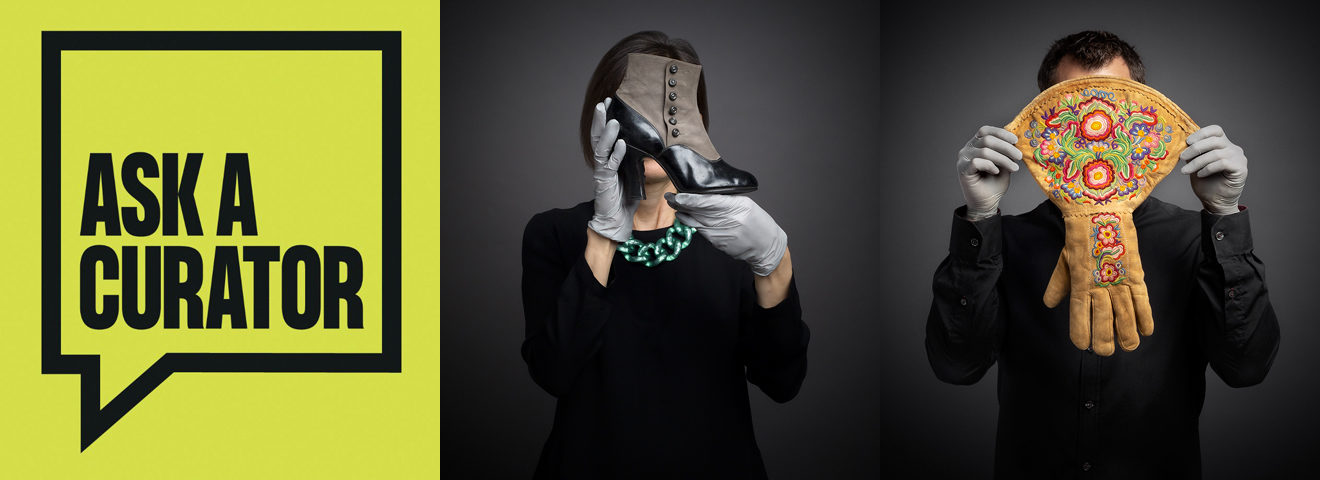
Our Curators answer you: Ask a Curator Day
Cynthia Cooper, Curator, Dress, Fashion and Textiles
Que feriez-vous si vous n’étiez pas conservatrice?
Je serais traductrice, ce que j’ai fait avant de découvrir qu’il y avait une carrière où je pourrais étudier l’histoire de la mode de manière continue. À partir de ce moment, aucun retour en arrière! Comme conservatrice, cependant, je fais énormément de correction d’épreuves, de révision de textes français et anglais, et je fais régulièrement des recherches terminologiques dans les deux langues. Mon ancien choix de carrière est vraiment revenu me hanter.
Any tiny outfits made for cats? (Or other pets?)
No, that’s one thing I’ve never seen in any historical collection. In fact, I’ve never even thought there could be! I guess this photograph shows me what I should be on the lookout for!
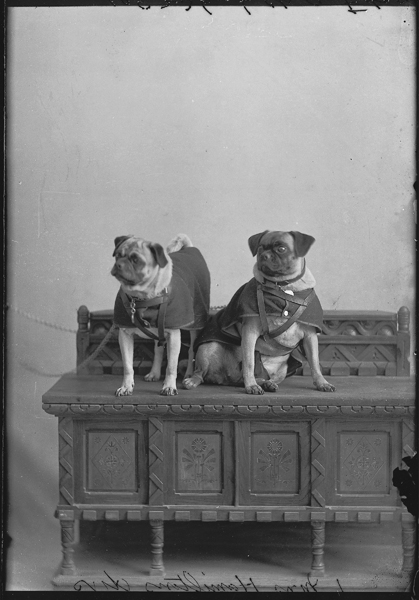
What question are you most often asked?
“Do you wear clothes from the collection?” Answer: No. Museums that collect clothing do not put them on human bodies. Ever. This question is usually followed by “Wouldn’t you like to?” No again. Firstly, while part of my practice as a historian involves thinking of how a garment looked and felt on a body, I don’t confuse that with any personal desire. Doing so would feel disrespectful of what that garment offers me as historical evidence.
What question would you like to be asked?
“How much time does it take to do an exhibition?” Answer: You have absolutely no idea! Exhibitions are so much work, and mobilize so many people in the Museum who do so many different things in so many steps. Can I tell you more? How much time do you have?
The question you don’t want to be asked?
- At the opening of a new exhibition, the absolute worst question is, “So what’s your next exhibition?” Grrr.
- “What does a collection of clothing have to do with Canadian history?” I mean, how do I even begin to answer that? It’s going to be a long evening.
- “Who’s your favourite designer?” Sorry, I love fashion, but I just don’t like to think about designers’ work in terms of favourites.
Accessoire préféré : chaussures ou sac à main?
Dans la collection du Musée McCord, les chaussures, sans aucun doute!
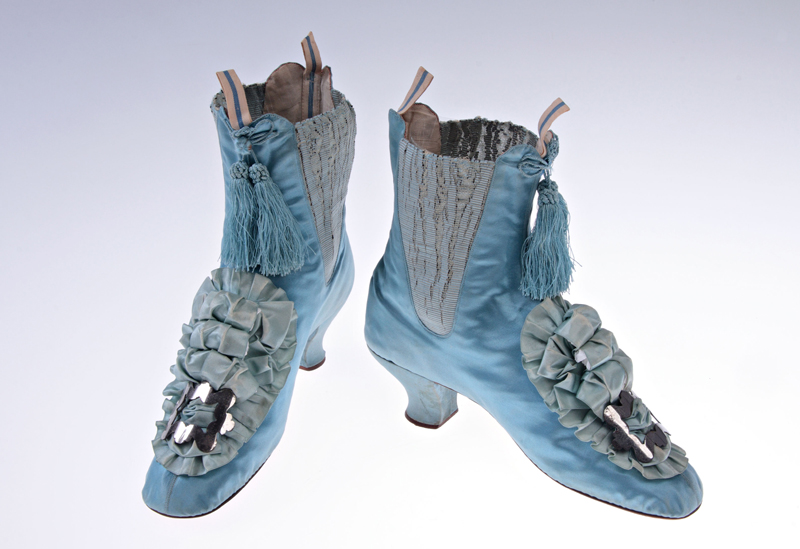
Quelle a été la tâche la plus inhabituelle que vous ayez eu à faire en tant que conservatrice?
Ce serait probablement d’avoir eu à expliquer à un douanier américain qui regardait dans le coffre de ma voiture que la raison pour laquelle je voyageais avec un grand couteau de boucher était pour scier les seins du torse en mousse aussi dans le coffre de ma voiture. Duh! Au McCord, nous avons une adjointe à la restauration spécialisée dans la fabrication sur mesure de mannequins adaptés aux vêtements historiques. Mais dans d’autres contextes, j’ai dû faire moi-même plusieurs modifications à des mannequins.
What piece do you feel has the most influence on pieces of clothing we wear today?
A shirt from 200 years ago is still similar in many ways to one we might find on the market today.
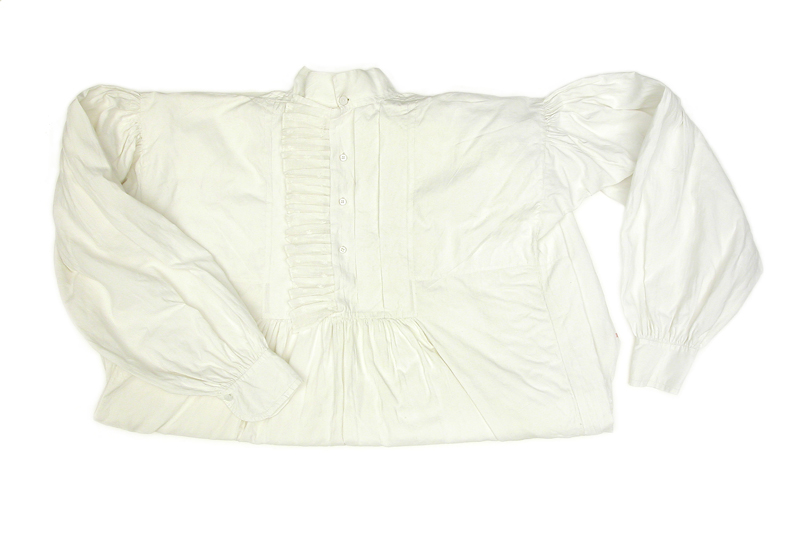
Have you ever broken an object?
I will admit that I have, and I am not alone. We don’t ever like to talk about it, because our mandate is to preserve our collections in perpetuity. Curators work with fragile objects, and while we do our utmost to avoid causing damage to them, very, very occasionally the fragility of something catches us by surprise, and in our normal careful handling some slight damage occurs. For me, the feeling is like is realizing I accidentally just ran a red light. It’s a potent reminder of just what can happen if we let our attention drift even the slightest amount, and it stays with us a long time and serves to remind us not to let it happen again.
Cynthia, the curators of the Canadian Museum of History would like to know, do you have a favourite piece of clothing or textile in our collections?
Well, I like this one!
Because our McCord collection has a picture of its owner wearing it!
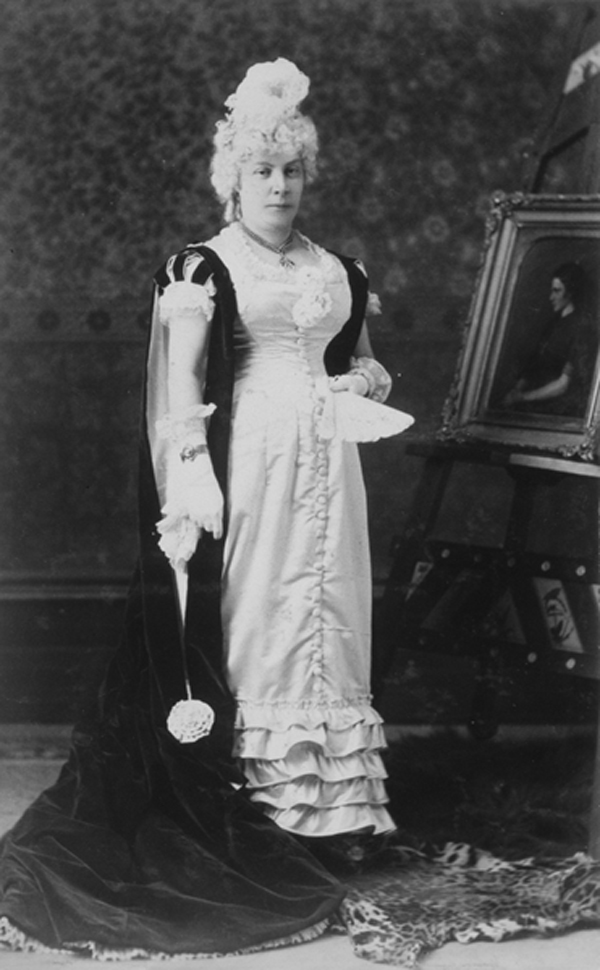
Quelle est la vision pour le futur de la collection avec la fusion de collections des dernières années?
Nous voudrions renforcer l’excellence de cette collection, particulièrement en ce qui concerne la mode faite et portée à Montréal. Nous n’arrêtons pas de découvrir des nouvelles facettes de ce secteur que nous souhaitons documenter.
Quel objet (vêtement, accessoire, textile) ou type d’objet vous aimeriez acquérir pour la collection que le Musée ne possède pas déjà?
Un maillot de bain du 19e comme ceci.
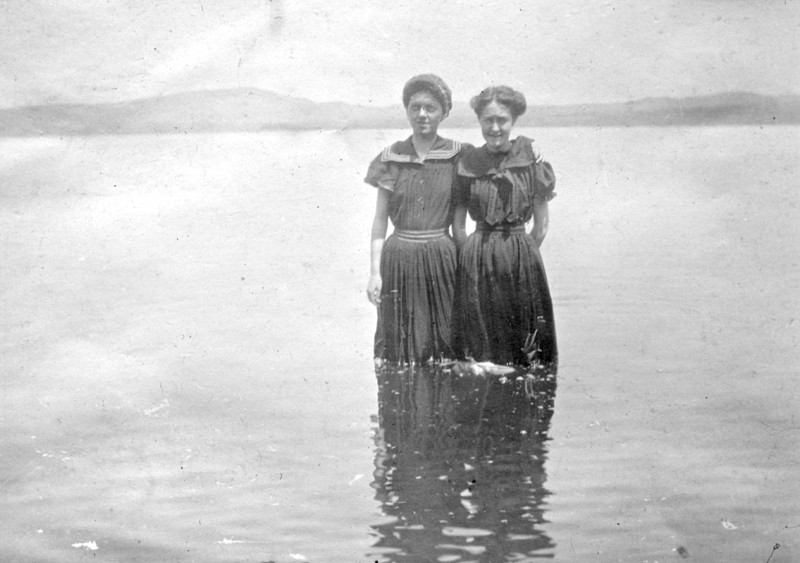
Ou bien la robe que porte cette femme en 1898, qui appartenait à son ancêtre vers 1810. Où se trouve cette robe aujourd’hui?
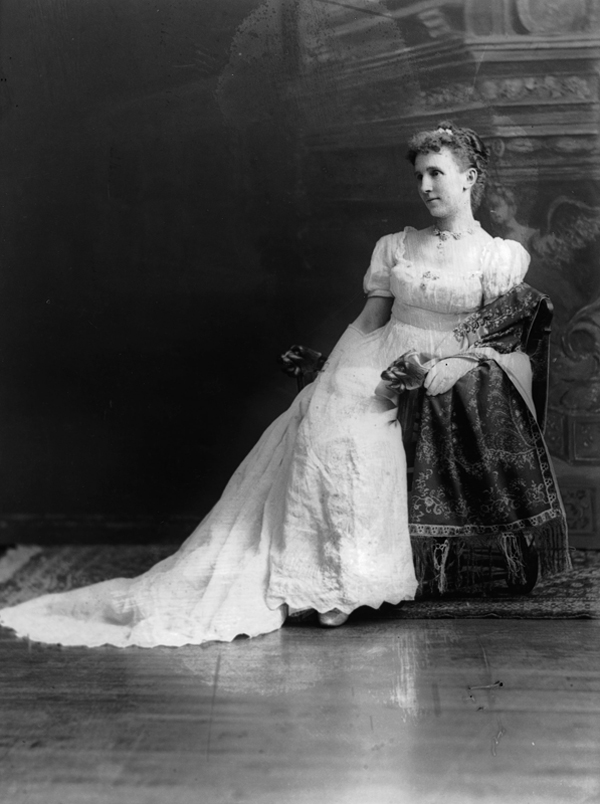
What is the most rewarding aspect of being a curator? The exhibit, the research, and so forth.
The most rewarding aspect of my work is knowing that every day I do something that matters in terms of preserving history and that will make a difference to the way people in the future will understand our past!
Jonathan Lainey, Curator, Indigenous Cultures
Que feriez-vous si vous n’étiez pas conservateur?
Une question bien difficile puisque l’histoire autochtone est ma passion première. Mais dans une autre vie, disons que j’aimerais être un brasseur (de microbrasserie), un chocolatier, un propriétaire de salles de spectacle, ou encore que j’aimerais jouer de la musique et faire des spectacles. Ou bien, plus simplement, j’aimerais gagner à la Lotto! Ainsi, je pourrais faire un peu de tout ça.
Un musée que vous avez visité et qui vous laisse un souvenir extraordinaire?
Sans aucun doute le National Museum of African American History and Culture (NMAAHC) à Washington. Immense, extrêmement riche et vivant, tous les aspects de l’histoire afro-américaine y sont inclus. La visite commence au sous-sol avec la terrifiante période esclavagiste, et plus on monte les étages, plus on progresse vers l’émancipation des Noirs américains, en passant par toutes les embûches qu’ils ont rencontrées, le tout démontrant une force et une résilience incroyables. Musique, science, littérature, sports, loisirs, mode, tout y passe!
What object makes you go hmmm?
These exquisite, mind-blowing mitts!
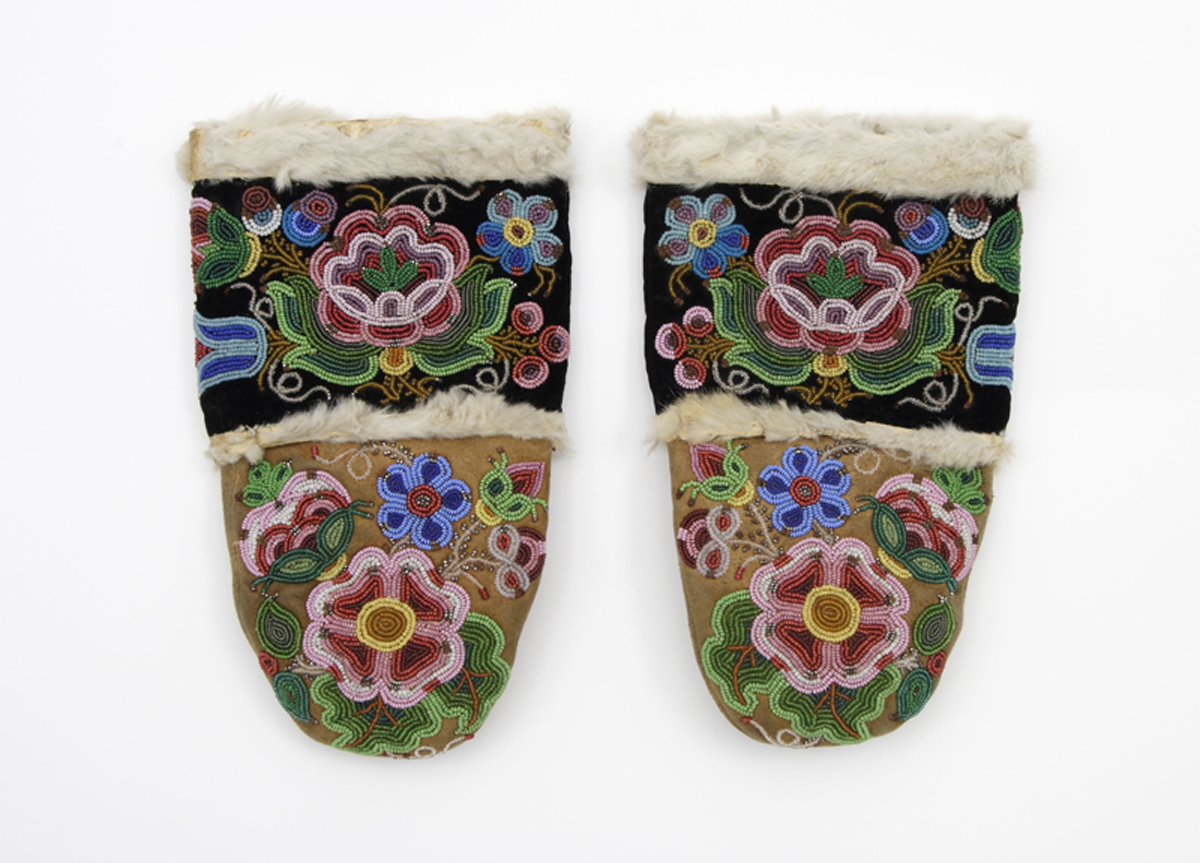
Allo Jonathan! Tes anciens collègues du @MusCanHistoire veulent savoir pourquoi tu nous as quittés pour le @MuseeMcCord? Blague à part, quel est ton objet préféré dans ta nouvelle collection?
« Objet préféré » : très difficile comme question. En fait, toutes les questions « préféré » sont difficiles (chanson préférée, groupe préféré, livre préféré, nourriture préférée)… la réponse plate est que je n’en ai pas! J’aime la variété!
Par contre, je trouve vraiment incroyable que, par hasard ou par la force des choses, je sois devenu le conservateur qui prend soin du wampum M20401… le wampum de loin le plus important pour la nation huronne-wendate d’où je viens, un wampum très ancien, très prestigieux, que David Ross McCord lui-même convoitait sérieusement déjà à la fin du 19e siècle. Je ne crois pas qu’il y a 125 ans, les gens aient pu imaginer ce scénario.
Si vous pouviez vivre à n’importe quelle époque, laquelle choisiriez-vous?
Ouf, c’est difficile. Je suis vraiment intrigué par l’époque post-Conquête, vers les années 1780-1820. J’aimerais rencontrer des gens de cette époque, parler à mes ancêtres de Wendake et m’entretenir avec eux sur ce qu’ils savent et ce qu’ils pensent de ce monde qui évolue rapidement. Cependant, c’était probablement une période assez difficile. Alors, peut-être que je devrais m’en tenir aux années 1960, quand les plus belles Corvette et Ford Mustang prenaient la route et quand Elvis Presley, Tom Jones et les Beatles définissaient ce que serait la musique rock?
What policies and procedures have you developed to facilitate the ability of Indigenous communities to access their material culture under your care? How do you make sure they know it is there, how do you make sure they can see it, use it, learn from it?
Over the past few years, the Museum has made a special effort to digitize its Indigenous Cultures collection in order to make it available online to as many people as possible. When Indigenous people want to see their objects, we always make sure to facilitate this access by providing them with a room where they can observe and appreciate the objects. We also listen to and consider their recommendations regarding the handling and exhibiting of the objects from their culture. For those who cannot visit our storage facility, we provide them with photos and the information available in our database.
Thanks! Do you ever send objects to communities on long-term loan? And has anyone requested a repatriation? How do you handle these requests?
We do organize loans of objects to communities when a request is made and when we know the conservation requirements will be met, but we do not have any long-term loans at the moment. No official repatriation requests have been made so far, but if some come up in the future, they will be thoroughly considered and evaluated on a case-by-case basis.
Thanks for answering these questions- our group (Reconciliation Working Group for ACA-ACCR) is working on ways to ensure conservation is never used as an excuse for denying access to belongings. Do you have any advice for conservators on how “conservation requirements” can be framed to facilitate and prioritize access?
This is a very good and legitimate question, as it is true that sometimes Indigenous communities are told that they cannot receive objects from their cultures based on “conservation requirements.” I guess that, depending on the conditions and on the situation, there are ways to find a compromise to accommodate every party, again on a case-by-case basis. Reconciliation and decolonization processes are requiring us to think and to do differently to facilitate and prioritize access to communities that are often disadvantaged in this regard.
If zombies attack, which item from the collection will you use to fight them?
This one in my left hand:
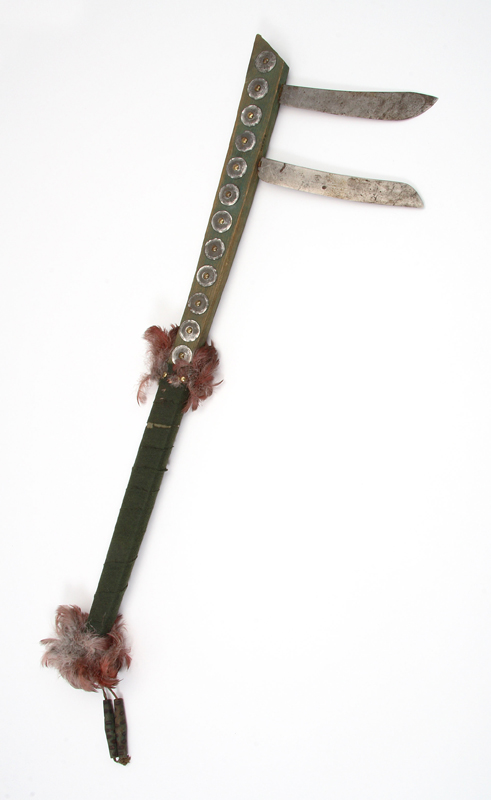
And this one in my right hand:
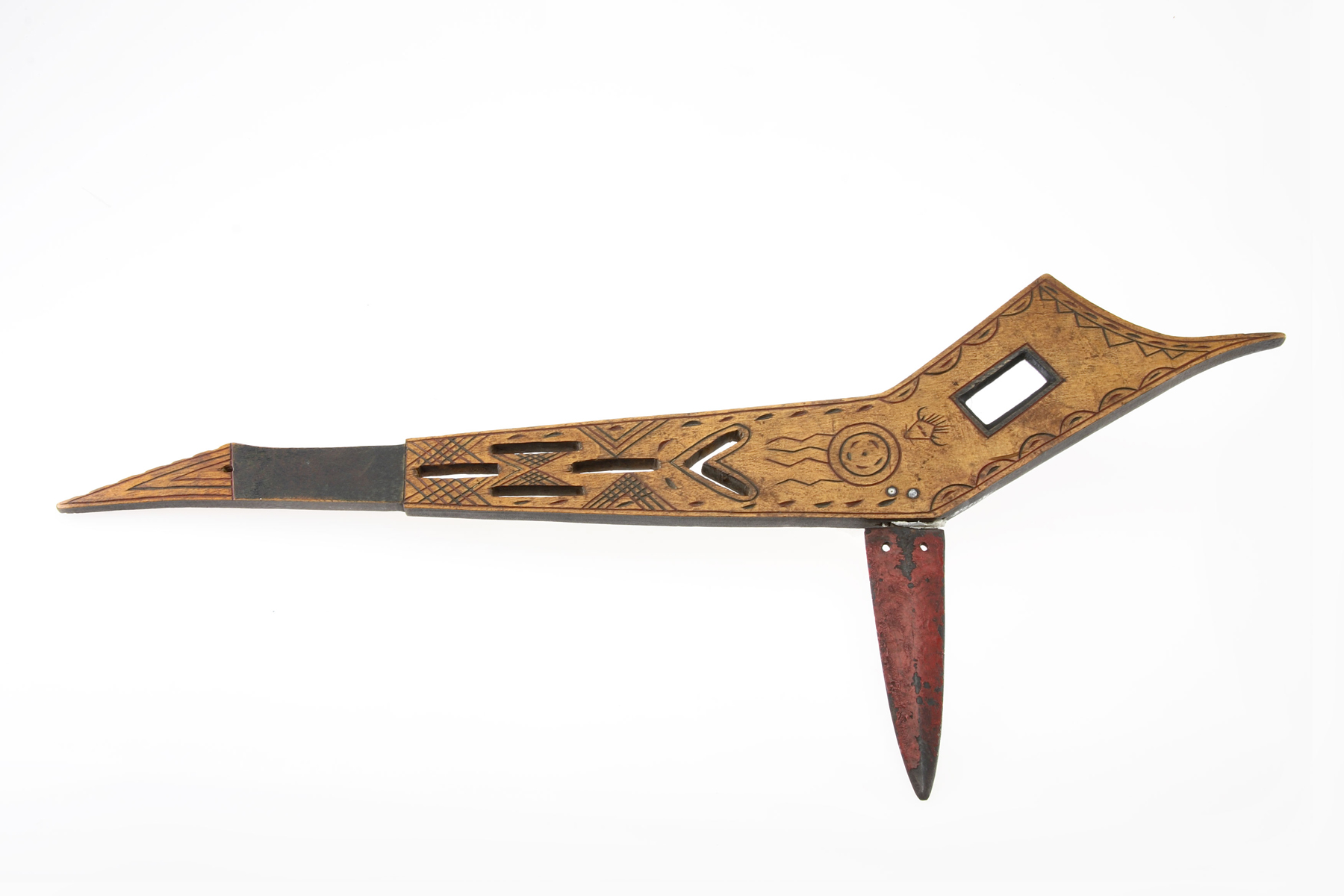
Is it true that the orientation of designs on aboriginal clothing such as moccasins and gloves can help date the item, with pre-contact designs facing the wearer and later ones facing outward?
I have never heard of this idea, at least among the Wendat nation where I am from! But as there are hundreds of Indigenous nations and communities across Canada, with their own specific cultural traditions, it is not impossible that such a concept exists among some of them. Also, the “pre-contact era” differs a lot from one region to another. In the East, it refers to the 16th and 17th centuries, and we definitely have no clothing items from this period.
What do you love about your job?
Being able to help. People come to us to find information about their history and culture, and one of our roles is to provide them with facts and data to guide them in their quest. It is really rewarding. Taking care of unique, one-of-a-kind objects is also a great privilege. Trying to document them to know their history and trace their journey in space and time is also fascinating and very stimulating (like a police investigation!).


